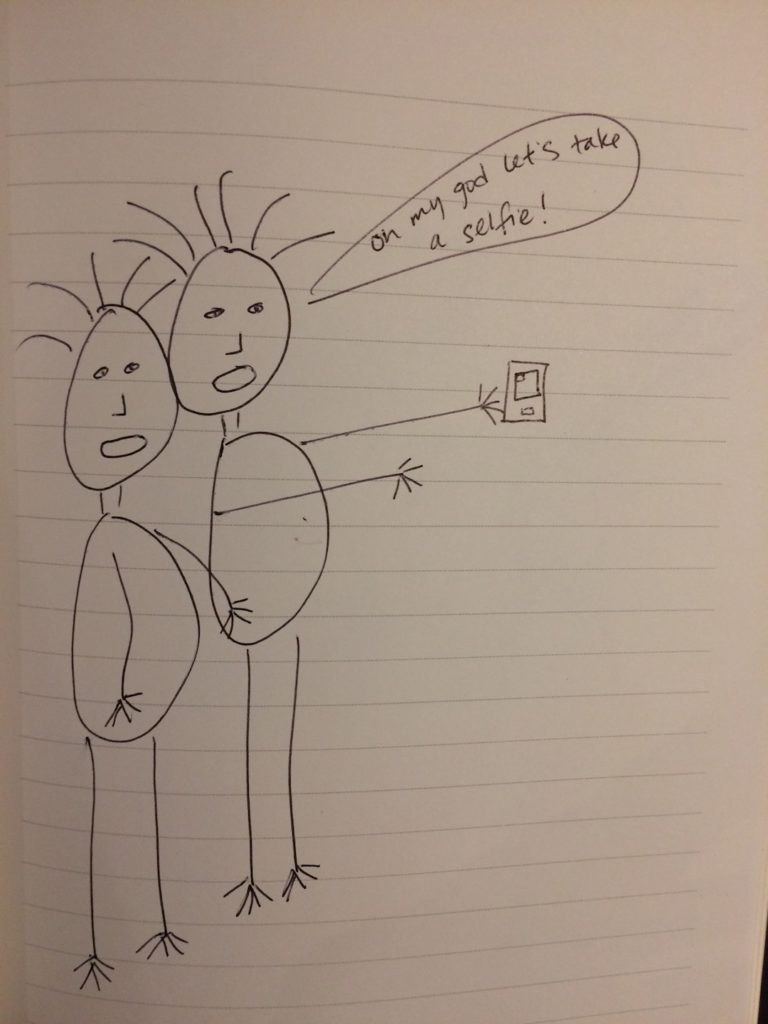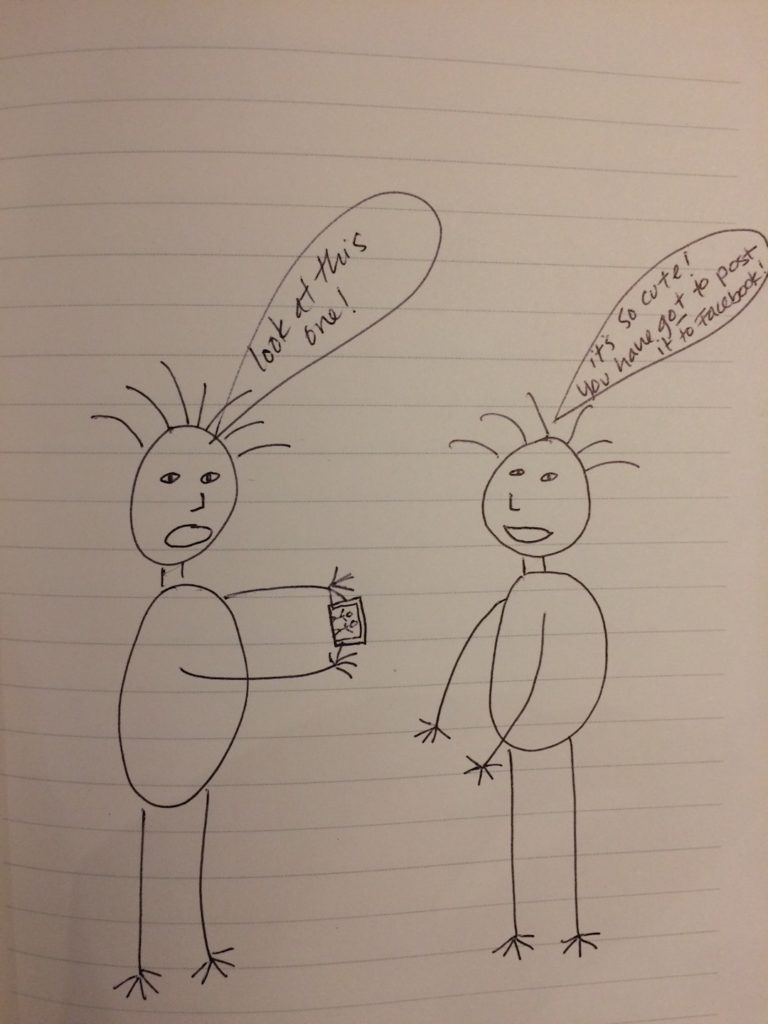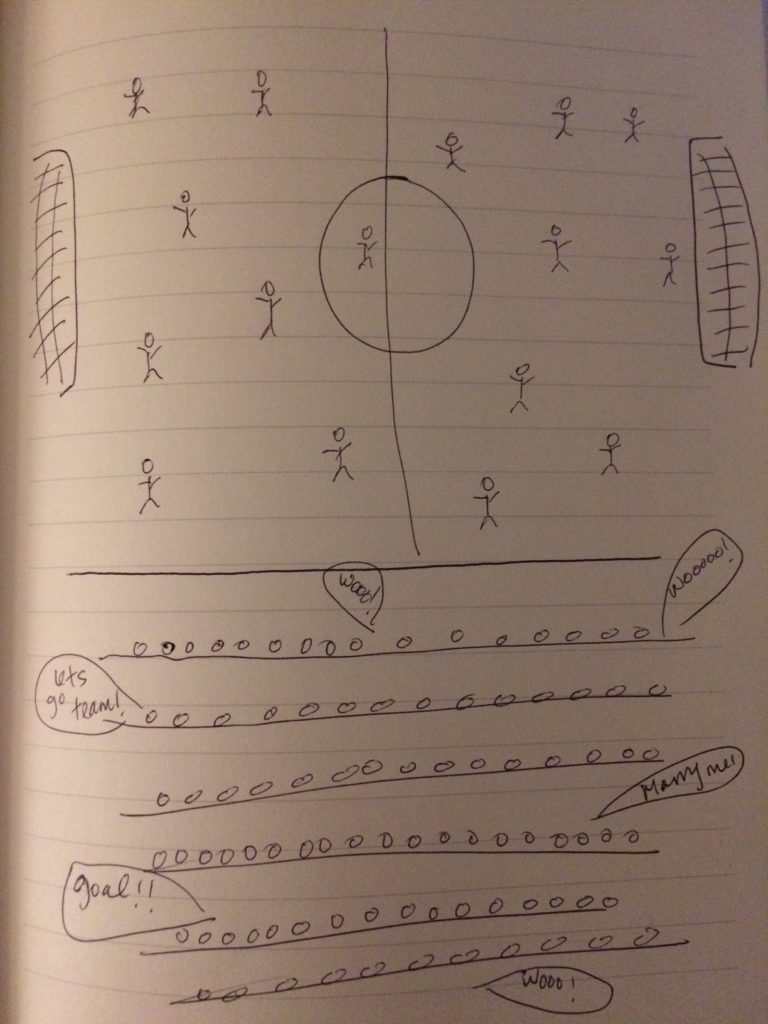Entry: Observed Habitual Activity #1
Most, if not the entirety of this species, engage in the digital preservation of static images. These images are taken either of themselves, of others, or of viewed objects and landscapes. The digital preservation of images (linguistic term: “picture”) is generally taken with either an object entirely dedicated to the digital recording of images (linguistic term: “camera”), or with a small hand-held object used for a variety of activities (linguistic term: “cell phone” – will be detailed in a later report).
While some of these digital images are taken candidly, a great majority of them are posed for. Before the image is taken, the species will tilt their head, smooth their hair, and widen their mouths out so that their teeth are showing. Some will also extend their limbs, jump up and down, or push one hip out to the side.

After the pose is captured as a digital image, most of this species immediately look at the image, or ask to see it in an apparent attempt to review indeterminable characteristics. After review, the image will either be deemed acceptable (whereby it is saved), unacceptable (whereby it is deleted), or passable (whereby it is saved but the pose or scene is recreated and multiple additional pictures of the same image are taken).
Once an image has been deemed acceptable, many of this species will share it with others in a variety of ways: physically, digitally, and via wireless networks.
The sharing of digital images is carried out from an early age: young ones (linguistic term: “children”) often take pictures and immediately show their parental figure in an apparent attempt to incite attention, feedback, or approval.
Fully matured individuals (linguistic term: “adults”) also engage in image sharing by immediately showing friends or family the pictures they have just taken. In addition, adults will send images to others electronically, or post images to extensive wireless networks that allow millions of others access to the same pictures. The purpose of adults engaging in image sharing seems to be to elicit the same reactions from others as from their parental figures when children: attention, feedback, or approval.




